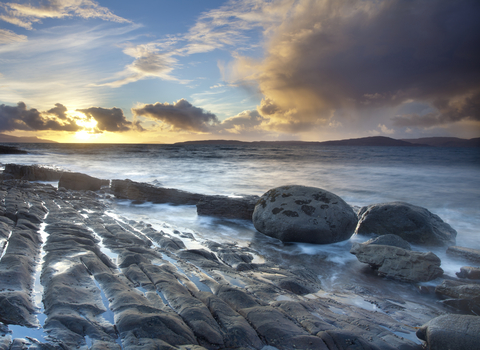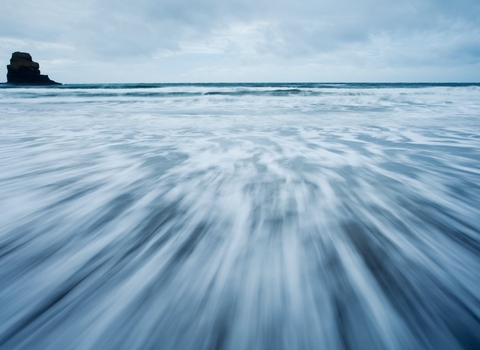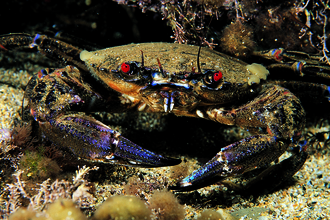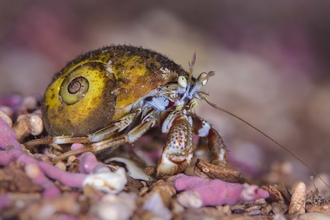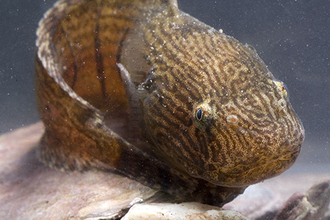Piran's crab by Steph House
St Piran’s hermit crab
This stunning hermit crab has only returned to our southern shores in recent years. Let us hope it stays for good this time!
Scientific name
Clibanarius erythropusWhen to see
April - October.Species information
Category
Statistics
Up to 3cm long.Conservation status
Rare in the UK.
Habitats
About
This species has only relatively recently made a comeback to the UK after disappearing from our shore in the late 1980s. St Piran’s will often use a variety of empty sea snail shells to make their home, including flat periwinkle, dog whelk and sting winkle. They are much shyer than the common hermit crab and will often hunker down inside their shell until all danger has disappeared.How to identify
Red eye stalks with striking black and white eyes. Claws are equally sized, unlike other hermit crabs, with black tips. Claws and legs have blotches of red and electric blue.Distribution
Warm water species, currently only recorded on the south west coast of England, more common further south and in Europe.Did you know?
In 2016, BBC Springwatch ran a competition to give this species a common name, with the chosen winning name being ‘St Piran’ - the Patron Saint of Cornwall, who was a hermit and who survived being thrown into the sea!How people can help
Always follow the Seashore Code when rockpooling, be careful to leave everything as you found it - replace any rocks you turn over, put back any crabs or fish and ensure not to scrape anything off its rocky home. If you want to learn more about our rockpool life, Wildlife Trusts around the UK run rockpool safaris and offer Shoresearch training - teaching you to survey your local rocky shore.Piran's crab by Steph House

